Diversification, Innovation and TikTok Virality: All the Juice From Beauty Suppliers at Cosmoprof Worldwide Bologna
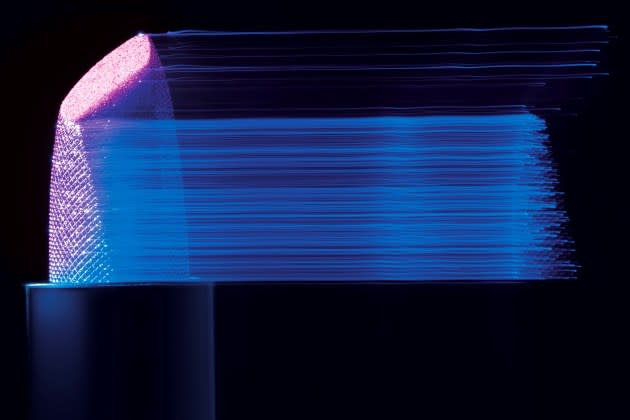
BOLOGNA, Italy — Global political and economic woes were distant echoes that didn’t impact the upbeat mood of beauty companies exhibiting at Cosmoprof Worldwide Bologna, which mirrored the positive momentum the sector is experiencing. The four-day trade show that closed on March 24 saw a 4 percent increase in the number of exhibitors to 3,012 companies from 69 countries and drew 248,500 visitors from 150 countries, with the international attendance up 9 percent compared to last year.
According to market analysis by Euromonitor International and shared by the fair’s organizers, on a global scale the beauty industry will reach a value of $670 billion by the end of the year, with an average annual growth of 9 percent expected for the next four years.
More from WWD
The projections were confirmed by beauty and packaging manufacturers, that despite confronted with disparate challenges — from shipment delays and logistic issues to increasing prices of raw materials and cyberattacks — shared optimistic outlooks for the year.
Renato Semerari, chief executive officer of cosmetic manufacturing powerhouse Intercos Group, said the company expects 2024 sales to increase between 6 and 8 percent at constant exchange rates versus 2023, when it posted net sales of 988.2 million euros. And this despite some hurdles experienced in the first quarter of the year, including a cyberattack causing a temporary suspension of its IT services last month and eventually resulting in slowdowns in production and billing processes.
Among the drivers for the year, Semerari expects China to continue to grow thanks to local brands’ performances and the inventory realignment phase embraced by the group’s prestige customers to finally wind down. To be sure, the company noted that after two years of strong post-pandemic beauty market growth, which led to a general rise in inventory levels to deal with the challenging supply chain situation, last year saw a number of prestige brands entering into a destocking phase, which impacted reorders.
Yet Intercos’ sales in 2023 were up 20 percent at constant exchange versus 2022 and it was all thanks to what Semerari and executives from fellow suppliers repeated as a mantra here: diversification.
Diversification and New Challenges
If the pandemic proved that having local outposts to cover different geographies is key to secure business continuity for any company, product diversification is increasingly seen as strategic to offset slowdowns in a specific category or fully grasp the many opportunities the sector is offering.
“The hair and body unit enabled us to sustain our growth at high levels in the second half of 2023, despite big makeup brands in a more conservative phase,” said Semerari. Sales generated by Intercos’ hair and body business unit soared 47 percent to 231.3 million euros last year, while those registered for the makeup segment were up 9.5 percent to 599.4 million euros versus 2022.
“So last year was marked by two different speeds: the first half driven by makeup, the second by hair and body and skin care, which eventually enabled us to report growth across all business units at the end of the year,” said Semerari. The executive underscored he didn’t expect such a booming performance by the hair and body unit, noting that it was boosted by the fragrance market that has significantly increased post-COVID-19. “It’s an area in expansion and definitely more recent for us. We think it will continue to grow in 2024 but surely not at the same pace of last year.”
Fragrances’ momentum also encouraged fellow Italian manufacturer Cosmei to approach the category on the longer term. The company’s marketing manager Isabella Milesi underscored how “the segment is rising and diversification is always optimal” and highlighted that Cosmei previously tipped its toes with scents by developing sticks for solid perfumes or designing the faucet handle-like design of the Off-White fragrances.
With the same spirit, packaging giant HCT is getting deeper in the category by launching a dedicated division, after previously developing compact formats for solid perfumes.
“We don’t fully own the glass facility.…We’ve been doing caps a lot because we have different materials, but we’ve identified a very strong partner in Asia that has very nice pumps for fragrances…and a glass supplier that can have better flexibility on minimum quantities,” said Denis Maurin, president of sales and innovation at HCT by Kdc/one.
At the same time, the company is experimenting with different application ways. This included a refillable pen-like format tipped by a cotton capillary system acting as a sponge to dispense the juice by tapping it to the skin rather than spraying it.
For Maurin, the expanding beauty market comes with challenges, too. “Last year everybody was having too much inventory and slowdown in a lot of their orders because they didn’t know when COVID-19 would be back. They reordered a lot of things and then they were sitting on these,” he confirmed. “This year we really see more activity, like two years ago, so it’s really good. When you look at the numbers, it’s all positive with more brands and more people buying, also because younger generation start earlier and the older generation continue to use products, so the range of consumers is expanding. But what is really hard for us, and I think for a lot of people at this show, is the fact the market is split between more and more brands.”
“Instead of doing one product with one brand like in the past, now you have to do 10 smaller products with 10 different brands and at the end that just doesn’t make you that efficient. So the most complex part is trying to be everywhere, helping everybody but still managing everything in the right way and efficiently,” said Maurin.
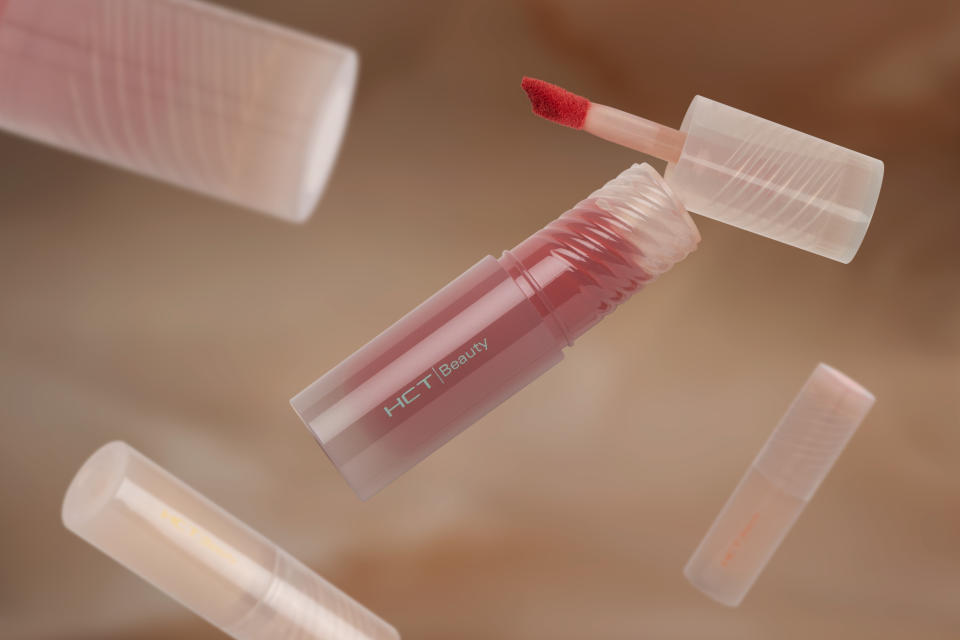
The ever-increasing demand from indie brands is sustaining this pace. For Intercos Group, for example, the emerging brands customers were the main growth driver last year, generating sales of 405.9 million euros, up 46.2 percent versus 2022, while those by multinationals — more impacted by the destocking phase — were up only 4 percent.
The quest to diversify its activity while tapping into the potential of this segment led Aptar Beauty, historically known as a specialist in fragrance packaging, to expand its proposition with the Turnkey Solutions division offering a complete service for all types of brands. The service, which draws on the experience and know-how of Fusion Beauty Lab, an internal laboratory located in the U.S., was set up for the Europe, Middle East and Africa region two years ago with a dedicated team.
Savéria Guelfucci, marketing manager of Turnkey Solutions by Aptar EMEA, underscored how the company’s second beauty collection, which was themed after the 2024 Paris Olympic Games and included 14 ready-to-use skin care and makeup products, addressed the demand for clean formulations and refillable packaging.
While the sustainable aspect is by now no longer a trend but a given for both brands and end consumers, Guelfucci also underscored new challenges surfacing for suppliers, starting from coming up with innovation but at a competitive price. She noted the rise of new formats and smaller sizes overall and demand for solutions at lower price points. To this end, Guelfucci said that shortage of glass months ago led the company to look at new solutions, like paper, encouraged also by Aptar’s acquisition of the iD Scent company last year.
“I think discovering fragrance on paper is the future and we’re trying to bring something different. But sometimes clients are not ready for it,” she said, adding how “traditional glass samples are perceived as more reassuring,” for example.
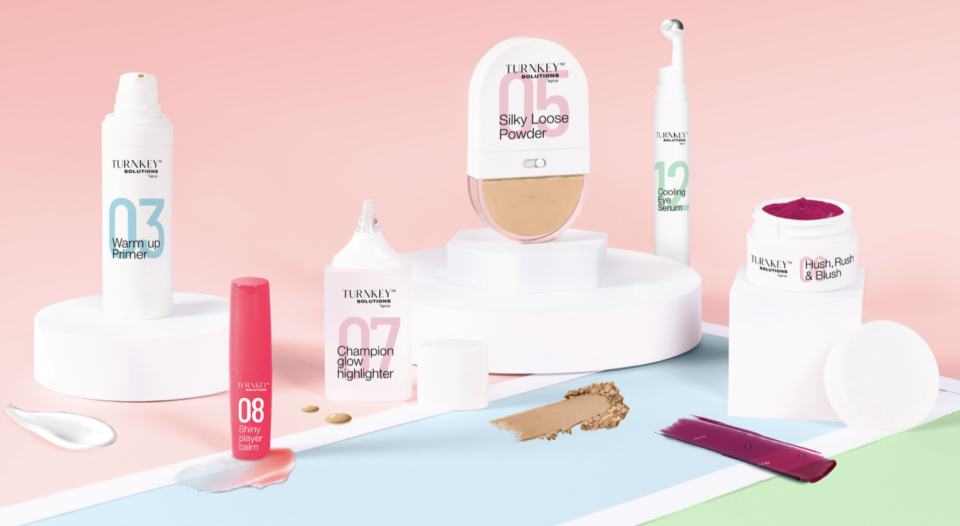
For B.J. Lee, CEO of Cosmax USA, speed is among the main challenges when it comes to innovation. “It takes time to make a new raw material qualifications and sort of registration, whereas the customers want us to move really faster. They have a tight marketing plan,” said the executive. “And because of all the information sharing through the social platforms, they know what is hot on the other side of the globe and they want us to produce their products but want to launch it in [another market]. So we need to move really fast.”
The company’s global footprint boasting factories in the likes of South Korea, China and the U.S. come in handy in the process. That’s why the firm is looking to expand even more in the next three years, starting by opening a plant in Japan in 2025, as the market is seen as the third biggest for beauty after the U.S. and China. In the same vein, Cosmax will enter Brazil, considered the fourth biggest market and currently “dominated by two giant companies…but there are a lot of indie brands there,” which Cosmax aims to intercept and serve. Ditto for California, where the firm plans to open an innovation center. Malaysia, Vietnam and Indonesia are seen as additional targets for expansion.
Italian manufacturer Art Cosmetics is investing in a new plant near its headquarters, instead. It will be dedicated to the production of powders, a category seen as key by the company’s global commercial director, Francesca Forfori. “It’s quite a challenge. It’s a segment dominated by an industry leader but we want to create an excellence in this field,” she said, underscoring that “it’s an investment that comes from market demands.”
Last year, the firm posted sales up 20 percent to 125 million euros compared to 2022, and Forfori said she expects similar growth this year, once again driven by the performances of the EMEA region — which accounts for 60 percent of total revenues — and the U.S., “which has significantly grown in the last five years thanks to strategic clients.”
Intercos has been in investment mode, too. Last year it completed the expansion of its plant in Poland and the one dedicated to fragrances in Italy. Recently, it acquired a 355,209-square-foot plot of land adjacent to its headquarters in Agrate Brianza, Italy, to build a plant dedicated to makeup bulk production for Europe. This year it will work to double its plant in South Korea and expand its production in China and India. In the longer term, the company eyes investments in Switzerland and the U.S., said Semerari.
For Cosmei’s Milesi, Spain is among the most dynamic markets, with local indie brands really keen on leveraging the design aspect. The company showcased among the strongest propositions to this end, tapping into many of the trends that dominated the Cosmopack halls.
In addition to monomaterial, recyclable and refillable eco-friendly solutions, new gesturality, textural effects and an overall sense of playfulness informed packaging collections and new cosmetic formulations.
For one, at Cosmei an extra-sharp and elongated lipstick came in an aluminum packaging that evoked vintage cigarette holders while granting a precise application. The company’s Tickle series nodded to sex toys, instead, by casing lipsticks, mascaras and sticks in curvy silicon overshells coming in candy colors.
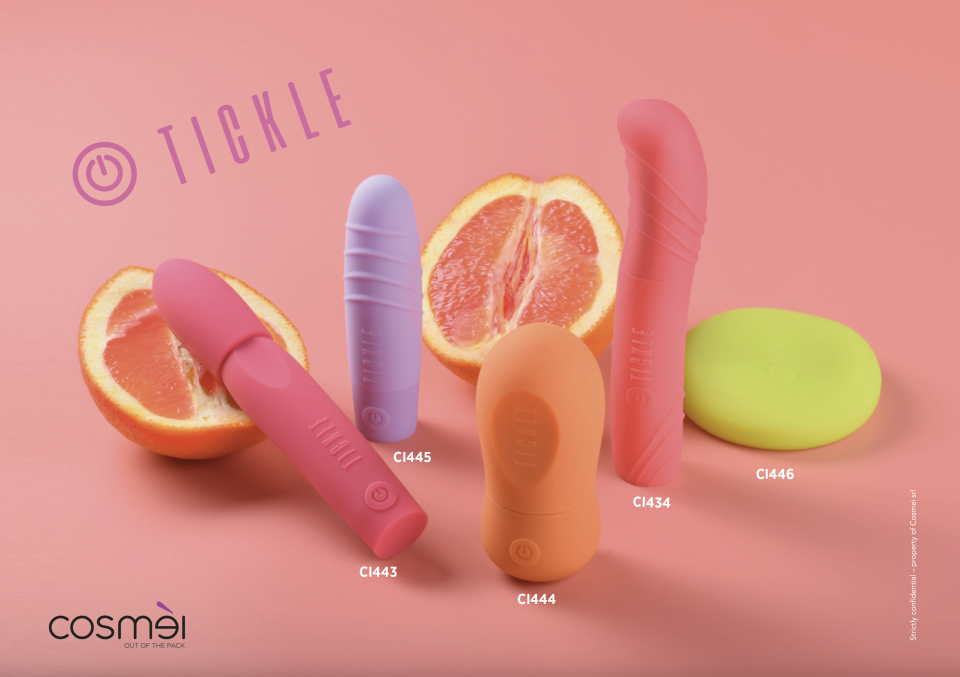
“The market is quite saturated. Now it’s all about playing and stimulating the visual and sensorial aspects with new effects,” said Milesi, who also pointed to the demand for “packaging with a story and whose life span can exceed the one of the product, like featuring detachable mirrors or beauty cases a person can keep.”
“The packaging of the future has to solve a problem of product application, it can’t be just a container anymore,” opined Andrea Brambilla, vice president of innovation and corporate marketing at Chromavis. The company is known for its innovative color cosmetic formulations, but these go hand-in-hand with the respective cases. Cue its Helix product, an eyeshadow coming under a guise of a tape roll to enable consumers just to cut the needed portion and activate it with water before application.
The Better Paper Roll pencil from Cosmax also had a fun approach inspired from childhood crayons. The product was wrapped in a monomaterial biodegradable paper packaging with water-based coating, to be sharpened by pulling away strings near the tip.
Go Viral or Go Home
The same mix of sustainable mindset looking to reduce product waste and playfulness was layered with a key topic ruling the beauty conversations: product’s potential to go viral on TikTok.
“The whole subject of sustainability is a big subject and breaks down in recyclability, more material reduction, low CO2 footprint in manufacturing — all this universe. But we definitely have another big pillar, which is the whole world of making [packaging] more experience-able…something that can go viral,” confirmed Bakic’s CEO Dominic Bakic. “It can be a decoration or some stackable solution, but it has to be something that you can really communicate.”
For one, the company’s Bubble series played with deflating and folding bottles enabling consumers to interact with products differently while squeezing all the formula efficiently. Bakic said it was powered by AI, a tool the company started to use two years ago “especially in the ideation and the design phase…to question our own way of thinking and come up with new innovative ideas.”
“I would not say that AI always increases speed of the processors. Sometimes it slows it because it’s widening [the reach],” he added.
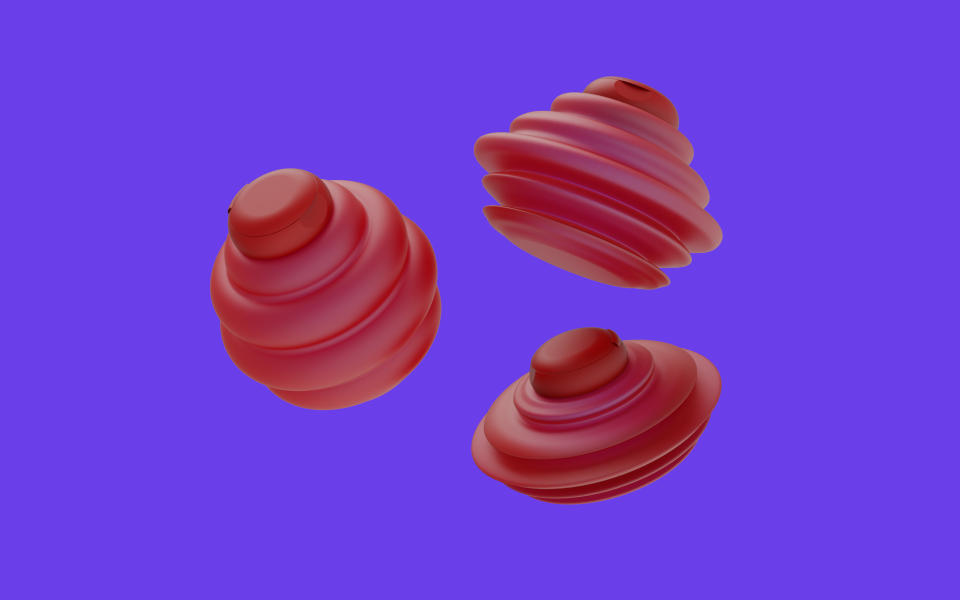
“You expect the viral expect to be important for a young consumer or a specific target of brands but we are receiving this request from luxury labels, too. And you wouldn’t expect it from brands with such a high positioning,” said Enrica Arsenio, chief marketing officer of Art Cosmetics. “TikTok has become an essential channel of communication for the industry.”
The entertainment aspect also informed formulations, which increasingly hinge on transformative, hybrid and lightweight textures that blur the boundaries between makeup and skin care; multifunctionality and with luminescent and dewy effects aimed at replicating the filters of social media IRL.
At Art Cosmetics, compact powders in gummy textures came with matching liquid serums to unlock additional skincare benefits, ranging from hydrating to plumping effects. In its own diversification process and experimenting with hair care, the company also presented the Unstoppable Brow & Hair Wax, a waterless, solid wax to set flyaway hairs or to fix unruly brows. Coming in a small egg-shaped format, this was available in a transparent version for a glossy finish or a pearlized one for an iridescent effect.
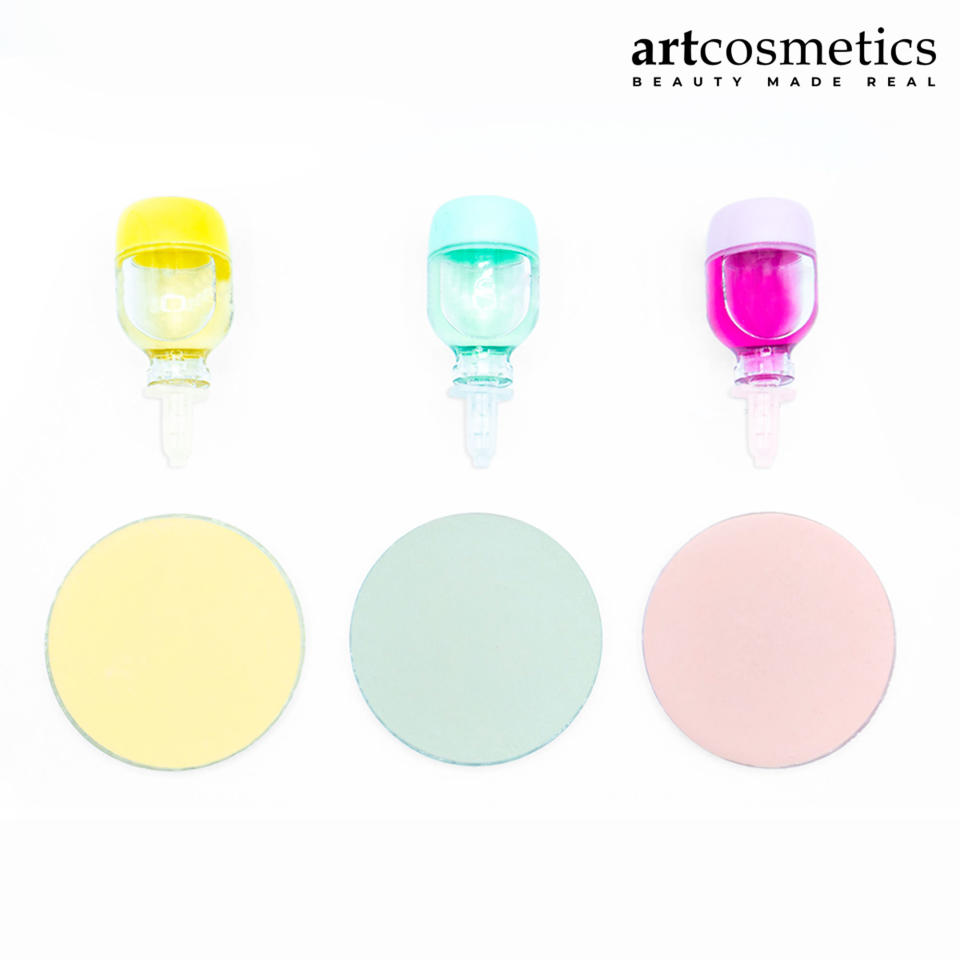
“The filter now is in the cosmetic product. What happens on the screen has to be transferred in the makeup. And that’s the tricky part: we’re pushed to find raw materials that play in a certain way with light,” said Chromavis’ Brambilla. “Plus Gen Zers are rediscovering the value of time: they want efficient and fast rituals…so now we’re definitely in the realm of functional color cosmetics.”
New formulations by the company included the eye-catching Onemore dual balm. This featured a faceted bullet with a vivid-toned, nutrient-rich inner core and a glossy outer layer, obtained with a double chamber pouring technique. In addition, Chromavis presented the Morphix loose powder foundation, that transforms in a creamy texture leaving a waterproof film on the skin thanks to the firm’s VeilCoat technology.
In the same transformative spirit, Gotha Cosmetics also presented concealers with plumping properties and hybrid powders like the Bubble Gum bronzer, whose plasticine-like texture secured a creamy touch.
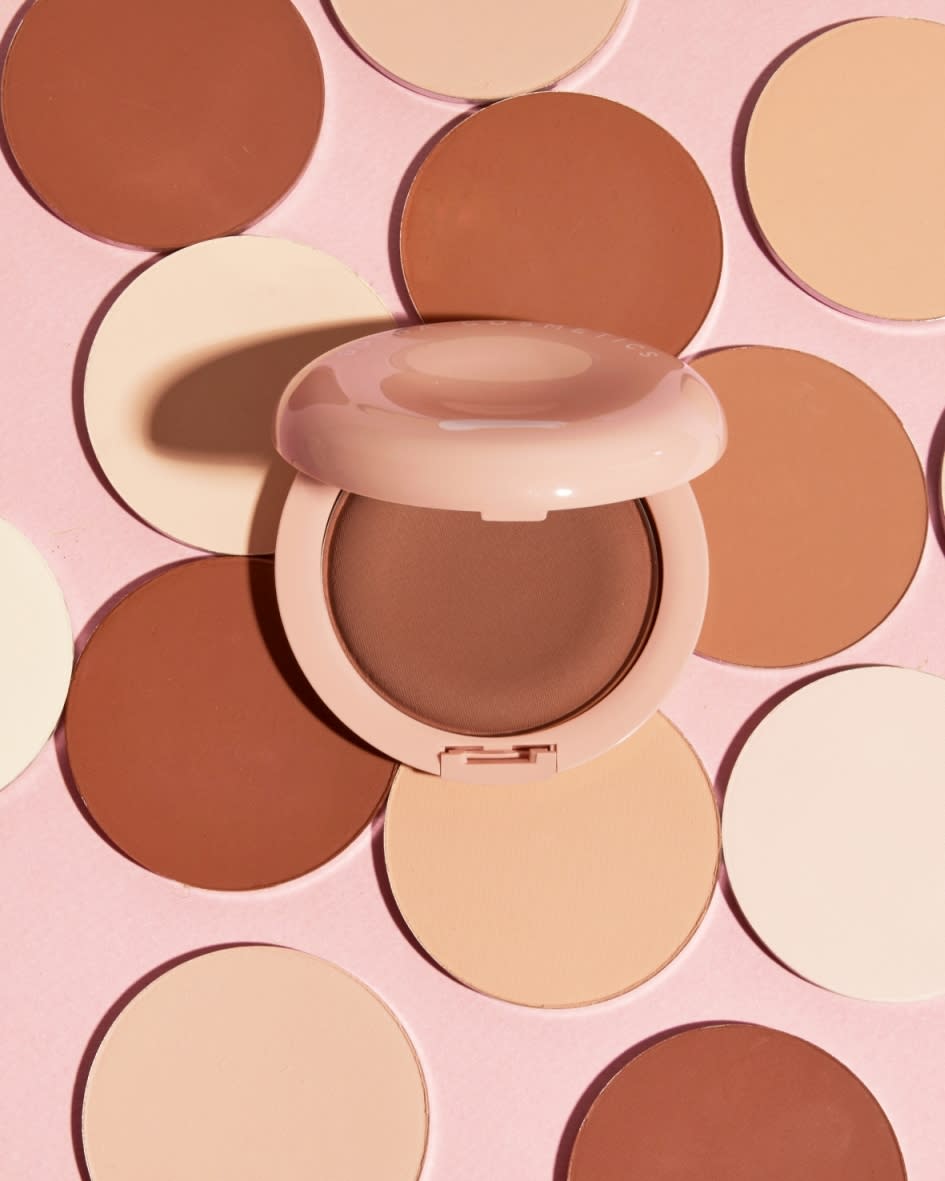
Best of WWD

 Yahoo Finance
Yahoo Finance 